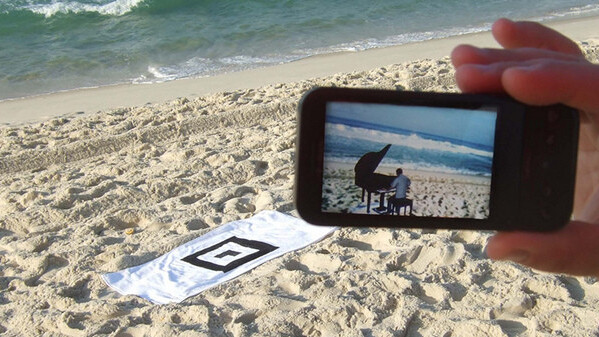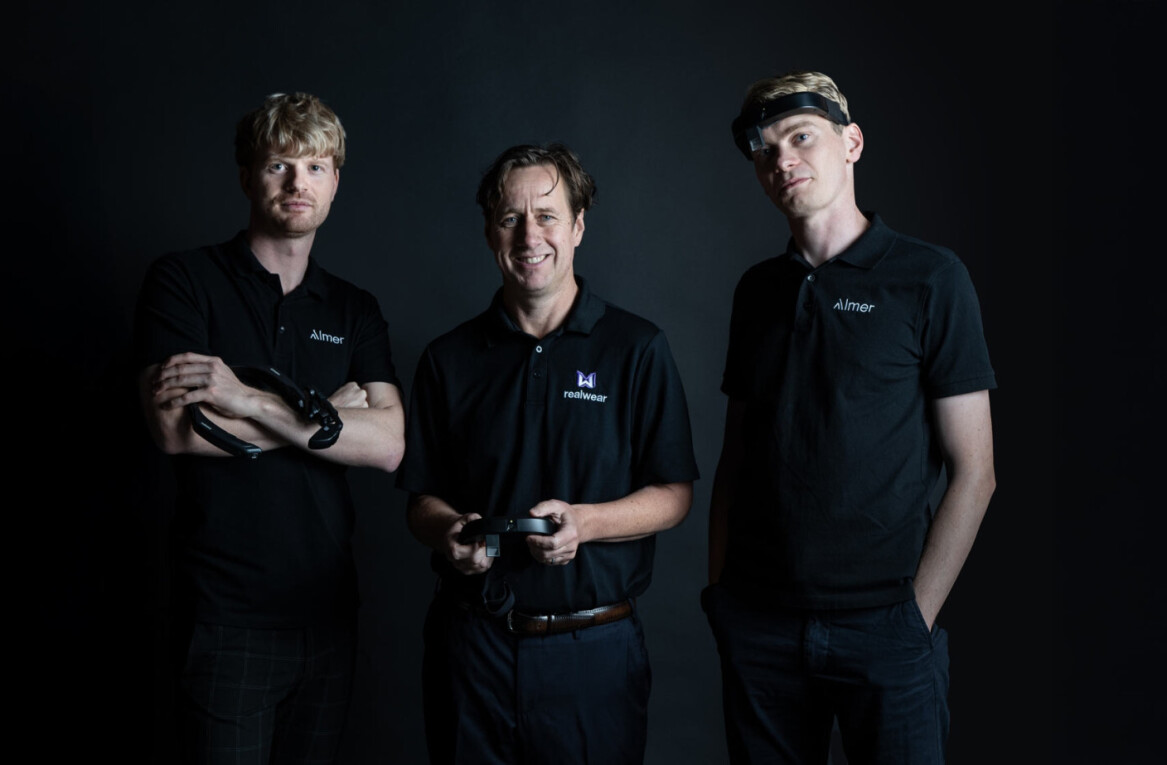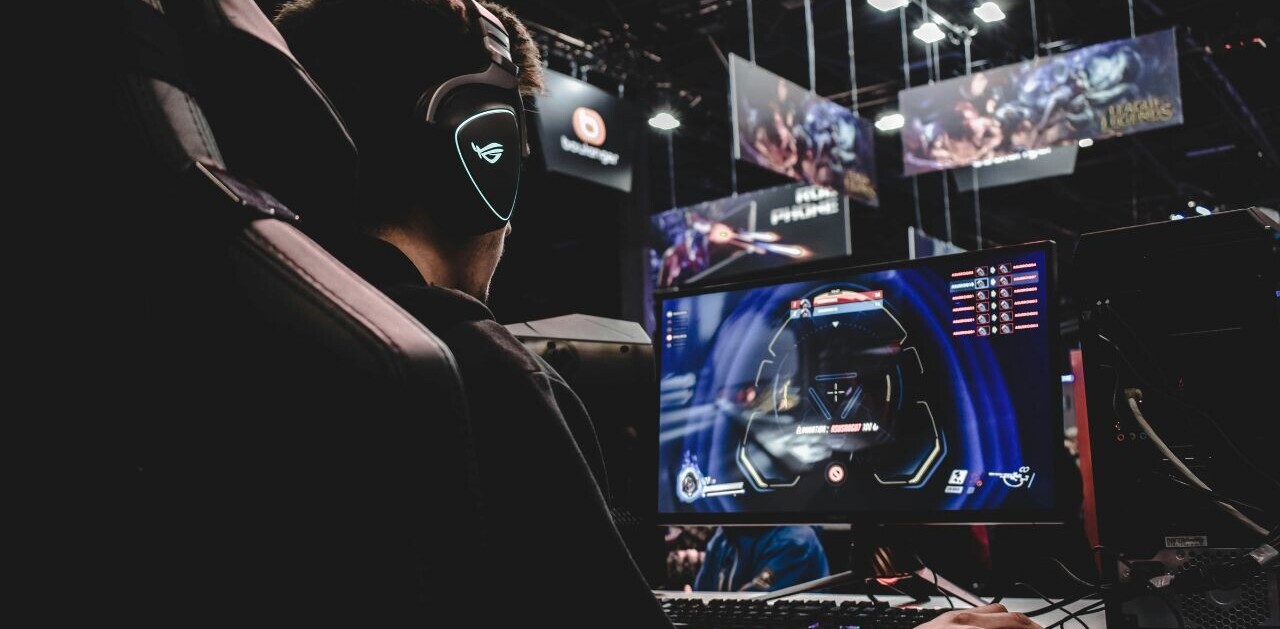
You may have heard about augmented reality before. If you haven’t, you’ll be hearing a lot about it from now on, with the smartphone and tablet revolution now in full-swing.
Augmented reality (AR) is a term used to describe a live view of a physical, real-world environment that is augmented by computer-generated sensory input, such as sound or graphics. A typical AR environment has digital information transposed onto a real-world view.
AR is not to be confused with virtual reality (VR), which is an entirely digital experience that mimics real-world situations.
There have been countless notable examples lately of augmented reality in action. It has only been in the last few years that brands have really started to tap into the potential of AR technology, and we reported on this back in December in our retrospective of 2010’s most memorable AR marketing case studies. This post is well worth a revisit to get a flavor of how businesses are harnessing AR tools to really take their advertising to the next level.
Just last month we wrote about Blippar, the augmented reality app that brings brands to life – both the iOS and Android apps are due out soon, but here’s a video of the app in action:
That’s augmented reality in a nutshell. As with any burgeoning technology, before we really look at where we’re at and where we’re going, it can be useful to take a quick look back at the path it has taken to where it is today. And if you’re completely new to this area, it’s also a good way to familiarize yourself with something that you’ll be seeing a lot more of in the months and years ahead.
So without any further ado, here’s a look at augmented reality: past, present and future.
Augmented reality: the past
As with many technologies, hitting a definitive moment when augmented reality was born isn’t easy.
For example, way back in 1961, cinematographer Morton Heilig patented his Sensorama machine, an immersive multi-sensory device that looked like a giant arcade game, except it emitted aromas, environmental elements such as wind and it also vibrated and played stereo sounds. Whilst some have referred to this as the earliest example of augmented reality, it probably leans more towards the virtual reality world.
But whatever it was, it was way ahead of its time. As you can see here, even by today’s standards, the working prototype that was built in 1962 really doesn’t look too shabby at all:
Other key advances that helped blur the boundaries between the physical and digital worlds include American Computer scientist Ivan Sutherland’s development of the first head-mounted display (HMD) in 1968. It was primitive and bulky, but it was a sign of things to come:
Indeed, Sutherland envisioned augmented reality in his 1965 essay, entitled ‘The Ultimate Display’:
“There is no reason why the objects displayed by a computer have to follow the ordinary rules of physical reality with which we are familiar. The kinesthetic display might be used to simulate the motions of a negative mass. The user of one of today’s visual displays can easily make solid objects transparent – he can “see through matter!”
Moving forward, computer artist Myron Krueger built what was called an ‘artificial reality’ laboratory called the Videoplace, in 1974. The Videoplace combined projectors, video cameras and special purpose hardware, and onscreen silhouettes of the users, placing them within an interactive environment.
Krueger developed Videoplace over a number of years, creating his own computer systems to facilitate image recognition, analysis, and response in real-time. This essentially meant that it was possible to combine live video images with graphical images. It sure does sound an awful lot like augmented reality:
Whilst augmented reality as a concept had been brewing for some time, it was Professor Thoma P. Caudell, then a researcher at Boeing, who first coined the term ‘augmented reality’ in 1990. He was referring to a head-mounted digital display that guided workers through assembling electrical wires in aircrafts.
AR as a concept started to take off during the 90s, and the development of virtual fixtures in 1992 is widely considered as one of the first properly functioning AR systems.
By the turn of the millennium, we were starting to see the first steps towards the type of augmented reality platforms we’re now becoming accustomed to – ARQuake is an augmented reality version of the Quake game developed by id Software. The AR game was created in the Wearable Computer Lab at the University of South Australia. Here’s a look at an AR shoot ’em up game from back in 2002, this one apparently wasn’t taken any further than the lab:
And in 2008, the Wikitude AR Travel Guide was released for the G1 Android phone. It was pretty cutting edge to have such an app on your smartphone at the time:
There are, of course, some gaps in the potted history of augmented reality provided above. Countless academics, scientists and geeks have helped us get to where we are today, and those that dared to dream have taken us to places that once existed only in sci-fi movies.
Augmented reality: the present
There are literally hundreds of examples of very cool augmented reality apps, tools and innovations out there. It would be easy to link through to the cream of the crop and simply say “wow, aren’t these awesome?”, but this ‘wow’ factor can only last so long before you have to take a step back and consider what their actual functions are. Doing cool things with technology certainly gets folks’ attention, but creating something genuinely useful from AR is another issue altogether.
SpecTrek, for example, is an augmented reality game available of Android and iOS devices. You hunt virtual ghosts in the real world using your smartphone’s GPS and screen:
It is pretty cool, and at around two bucks to download, it will hardly break the bank. The game uses GPS, and you need a large open space to play the game, so there’s a danger that you’ll physically crash into something or tumble off the edge of somewhere steep. Plus the game ultimately suffers from the ‘novelty’ factor.
There’s a lot going on in augmented reality right now, and it’s becoming a crowded space. I spoke with Rish Mitra, co-founder and CEO of Blippar, to get his thoughts on where we’re currently at in the augmented reality space.
“The broad trends in augmented reality are image recognition and tracking, location layers, virtual product trials and social gaming. Location layers have been popular so far because they were first to launch AR via the app stores. My only concern with them is that they provide information based on Google Maps, GPS and compass functionality, and Google Maps is already sufficient for most users’ information needs. Image recognition and tracking is rising in popularity, but user experience is key to the success of technology. The user experience absolutely has to be seamless, instantaneous and offer real value to bring image recognition AR to the mainstream.”
And it’s this ‘real value’ element that seems to be lacking across many AR apps. I asked Mitra what he felt the current limitations were regarding augmented reality today:
“Very few technology providers have unshakeable image recognition and tracking. The ability to interact with everything in the world as we see it and get real-time information/interaction out of it is still a big challenge for most providers. Object and colour recognition is still at the lab-stage too, and it still remains a very academic research area. Compasses and GPS accuracy in current handsets are also not good enough to make information layers fully reliable.”
So it seems that the actual technology to detect certain real-world elements simply doesn’t exist yet, which suggests that AR still has quite some distance to go to realize its full potential. As for the much-maligned ‘novelty’ factor of many AR platforms, I asked Mitra how he felt Blippar plans to stand the test of time:
“As a technology we are proud of our image recognition and tracking capabilities which gives consumers a much more reliable and exciting experience than has been experienced so far. As a marketing consultancy, we are advising clients about the very best way to use our technology to ensure the usability is either instantly gratifying or functional so that we can embed a new consumer behavior which is no longer subject to accusations of ‘fad’ of ‘gimmick’. Our vision is that our AR should work perfectly every time, it will offer something immediately gratifying and it will become the universal call to action for a ‘yes please, I want more information or to engage further with this brand’.”
It’s probably also worth stressing that Blippar was planned and researched for a year and a half, and the actual development of the app was only a few months. Such an approach will probably prove pivotal to the success of many AR tools, with more focus placed on the research and planning phase, rather than a rush to get something ‘cool’ to market.
To get a real sense of where we are with augmented reality, it’s perhaps worth looking to some of the market leading AR companies.
Total Immersion has been augmenting reality since 1999, and you may be familiar with some of the company’s work to date. We’ve already seen some amazing innovations emerge from Total Immersion, such as these AR baseball trading cards back in 2009:
And two weeks ago, Total Immersion released TryLive, a potentially game-changing AR application aimed at online clothing and accessory retailers. Whilst people have been shopping for clothes online for years, there really is no substitute for trying before buying.
Any device equipped with a camera can tap into the various TryLive applications which essentially bridge the gap between viewing and trying on the product by acting as a virtual showroom. Okay, it won’t help you test for the fit, but it will give you an idea of how you’ll look in something.
The TryLive Eyewear application lets users try on glasses straight from their iPhone or from a computer. You also have the option to take a picture and send to your friends through social networks:
Companies such as Total Immersion are helping to set the AR expectation levels. Augmented reality has to show that it can cut it as a longer term commercially viable technology.
Another company that is doing pretty groundbreaking stuff in the AR sphere is CrowdOptic, a real-time crowd behavior monitoring tool underpinned by augmented reality technology.
CrowdOptic lets fans at events such as concerts and sporting fixtures point their smartphones at an athlete or performer and view real-time information about the target, such as coaching insights and stats, and also receive exclusive invitations, ticket discounts, marketing promotions and more.
For example, if you’re at a concert or football match you might point your phone’s camera at the action. If a few hundred other spectators do the same thing, using triangulation and GPS data, CrowdOptic detects where the crowd’s attention is at any given moment, relaying the data back to the event’s organizers.
By knowing what is being photographed or videoed, this gives the organizers a mechanism for monetizing these insights in real-time during the live event.
Brent Iadarola, Industry Analyst, Mobile Communications with Frost & Sullivan said of the technology:
“CrowdOptic is a breakthrough application in the Augmented Reality space. Without changing anything fundamental about the fan experience, CrowdOptic allows us to point our phones at people and instantly acquire almost limitless information about them.”
The results from this technology reveal a new way of understanding what crowds are focusing on which – in time – could well change the nature of live event broadcasting.
This offers something different to the countless cutesy AR apps that are doing the rounds and sets a benchmark for what could be a massive advance not only for augmented reality, but geo-location technology too.
I asked Jon Fisher, founder and Chief Executive of CrowdOptic, where he felt augmented reality – on the whole – was at today:
“Where we are now is augmented reality on static environments. There are great applications on sports stadiums as a function of GPS, for example. The location of the stadium is known (and doesn’t change) so companies can place all kinds of bells and whistles on the stadium. Apps can even tell you where the closest bathroom is.”
It seems that AR is currently pretty good with static objects and all things ‘known’. The next big step for augmented reality – something that CrowdOptic is moving towards – is to focus on ‘moving’ and ‘unknown’ targets. For example, it may soon be possible when you’re watching the marathon to hold up your smartphone and track how fast they’re running with real-time stats.
And this gives us a glimpse into possible future uses of AR technology.
Augmented reality: the future
Waving a smartphone or tablet in front of an object is already producing some truly inspiring results for current AR users, but it doesn’t always seem like the most practical way of doing things – it would seem that a pair of AR-enabled glasses would be a lot easier to use. However, Blippar’s Rish Mitra thinks the next big developments in AR probably won’t be goggles or glasses. He says:
“The next big thing in AR will still be via smartphones, and we will see developments in the field of image, object, color recognition. There’ll be few verticals in the area where startups will find niche uses of this technology. Also, location layers and image recognition might merge to give users a more wholesome experience. In terms of beyond mobile, I do believe an AR eye-lens and glasses will evolve, but the gear needs to be lightweight, attractive and comfortable to wear.”
So when will this happen? Mitra says that social acceptance of the idea needs to be there first. The route in, it seems, will be through a typically early-adopting crowd – the gaming community – before it becomes a mass market product.
However, we are already seeing some steps towards non-smartphone/tablet augmented reality consumer hardware. The ‘world’s first GPS enabled goggle‘, aimed at snowboarders, is already available, which displays key data on the inside of the user’s field of view, such as speed, distance, temperature and location:
In the academic sphere, Helen Papagiannis, a designer, artist and PhD researcher specializing in augmented reality, has been working on some pretty cutting-edge concepts for using AR technology. She recently developed the first AR pop-up book for mobile devices. Check out the video here – the tarantula attacks when it’s touched on the screen:
This is a neat example. The inspiration behind the pop-up book was augmented reality that had been used in psychotherapy studies for the treatment of phobias such as arachnophobia. Papagiannis notes:
“AR provides a safe, controlled environment to conduct exposure therapy within a patient’s physical surroundings, creating a more believable scenario with heightened ‘presence’ and greater immediacy than Virtual Reality (VR).”
So, augmented reality has the potential to affect all industries and walks of life, from advertising and marketing, to gaming and medicine. But, as Papagiannis has previously said, much of our current AR experiences are ‘single viewer’, something she believes we should be moving away from:
“I strongly believe AR is emerging as a new medium and it will come to play a large role in entertainment and information sharing…I’d like to see more work move beyond the single-viewer experience in AR and engage larger audiences in a simultaneous viewing and even collaborative interactive experience. I think this is particularly relevant for museums in designing and producing AR experiences.”
Whilst the ability to enjoy AR experiences simultaneously and collaboratively may help bring the technology mainstream, it will also help if the power of augmented reality technology is broadened to be made accessible to as many people as possible.
There are countless tools and platforms these days that enable non-techie people to build pretty comprehensive and functional websites. If this can be replicated in the AR sphere, then we could see its uptake grow exponentially. We wrote about Poistr back in March, and this could be the type of tool to do just that.
Poistr enables non-developers to create elements and points of interests that are viewable using the Layar app, one of the most popular augmented reality browsers. Poistr is still in beta mode, and it’s currently free to use, but it could be a sign of things to come as AR technology is gradually opened up to the masses.
Augmented reality at present still largely feels as though it’s finding its feet, finding a niche and, ultimately, finding a purpose. But there are clear signs of the direction in which it’s heading.
The next five years should see some significant advances in AR technology, and you can expect to see it become far more integrated in our everyday lives. And that’s the real challenge – seamlessly merging the digital and physical worlds. Only then will we stop hearing cries of “wow, that’s cool…”, followed by “what do I do with this, exactly?”
Meanwhile, if you want to follow what’s happening in this field of technology, why not read our recent post outlining the 25 most influential people tweeting about augmented reality.
Get the TNW newsletter
Get the most important tech news in your inbox each week.





